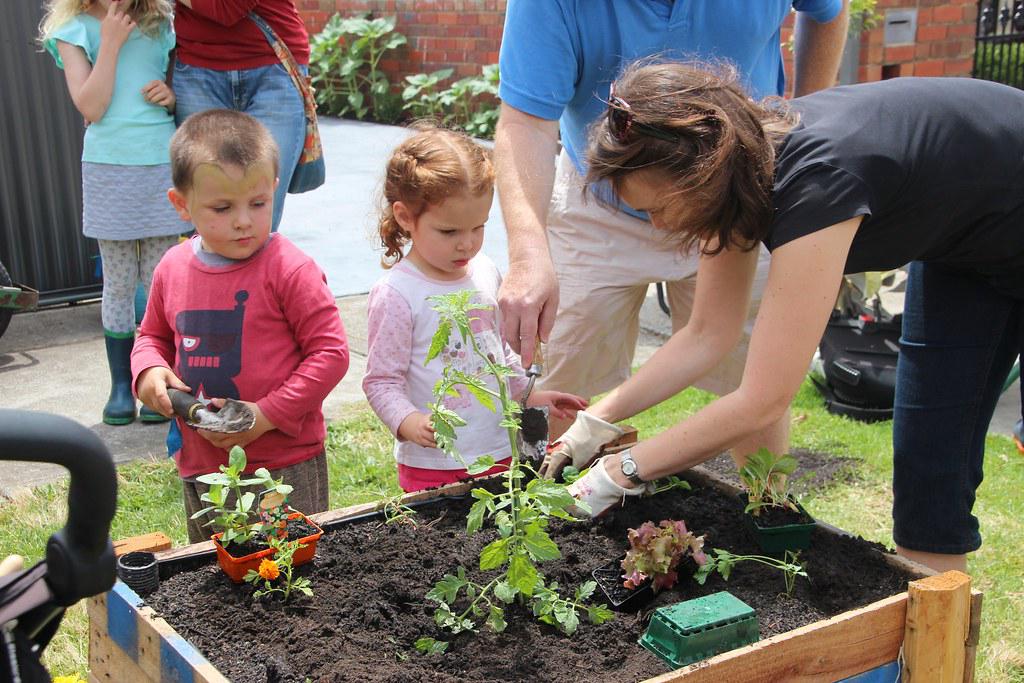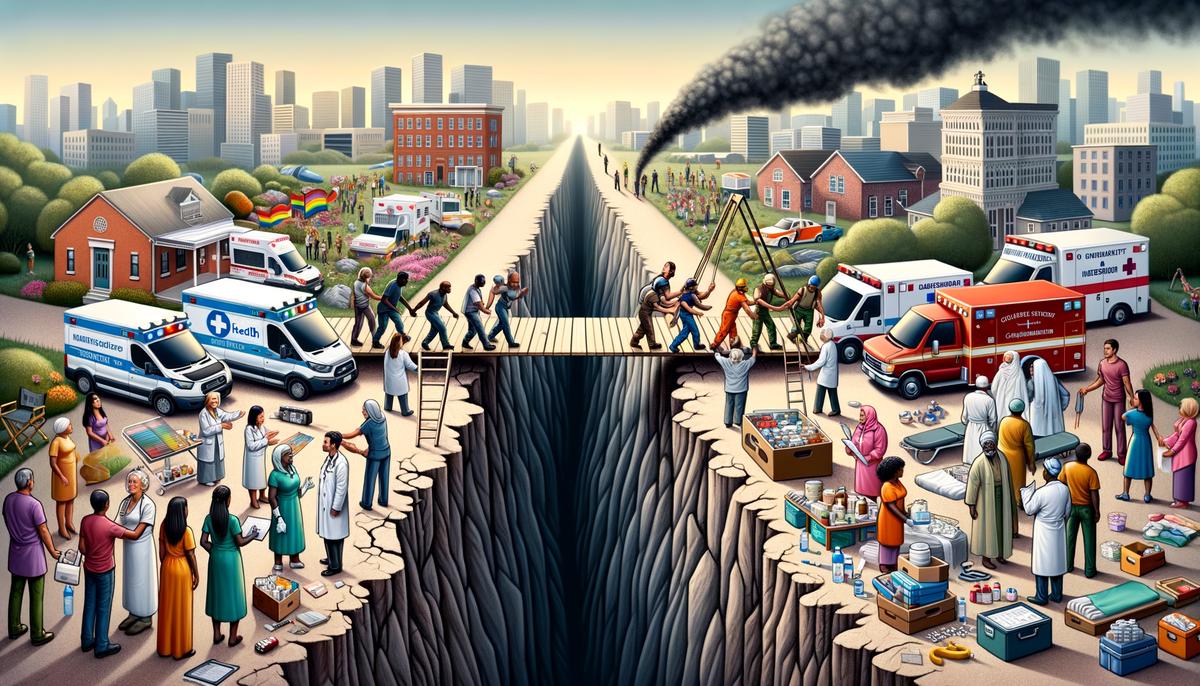Defining Health Education and Its Community Role
Health education is about boosting our collective wellness by spreading knowledge and promoting good habits. It's like an all-encompassing umbrella, shielding the community from a variety of potential health issues.
A team of public health departments, schools, local nonprofits, and government bodies collaborates to design educational programs suited to the community's needs. Dr. Tanyi Obenson from SNHU puts it simply: "A healthier community is a better community."
Healthcare disparities are those sneaky barriers that keep communities from getting equal access to wellness resources and services. Dr. Natalie Rahming emphasizes that many of these disparities stem from longstanding discrimination. It's a challenge that community health workers aim to address.
Health educators also influence policies and legislation. From campaigns to enforce seatbelt use to anti-smoking laws, they ensure research and knowledge shape the rules that protect us all. Dr. Toni Clayton at SNHU highlights the importance of community leaders in this equation, noting that their collaboration is crucial for tackling social, economic, and environmental disparities.
Health education impacts the economy too. Programs addressing issues like obesity and tobacco usage save money and provide a great return on investment. The CDC reports that tobacco control programs yield $55 for every dollar spent.1
Becoming a Community Healthcare Worker
- Minimum requirement: High school diploma or associate degree
- Recommended: Bachelor's or master's degree in public health
- Job outlook: 7% growth through 2032 (U.S. Bureau of Labor Statistics)
As community wellness gains more spotlight, health education stands as a beacon of hope, guiding us towards healthier, happier communities.

Impact of Health Education on Community Wellness
Health education transforms lives through informed decisions. It's like sunshine nurturing a garden, helping every part of the community reach its full potential.
Key Areas of Impact:
- Chronic disease prevention: Spreading awareness and encouraging early detection
- Injury prevention: Teaching safety practices like wearing helmets and using seat belts
- Mental health: Providing information on stress management and reducing stigma
- Substance abuse and tobacco use: Implementing informational campaigns
- Nutrition and exercise: Equipping people with knowledge for healthier choices
The stakeholders—public health departments, schools, local nonprofits, and government bodies—work together to create and implement programs that meet the specific needs of the community. Their collaboration is essential for improved wellness and health equity.

Health Disparities and Policy Implications
Health disparities are the unwelcome guests at the wellness party. We're talking about gender, racial, and socioeconomic differences that cause unequal access to healthcare and resources.
Types of Health Disparities:
- Gender disparities: Women face longer waiting times for treatment, while men often avoid seeking mental health help due to stigma.
- Racial disparities: Black and Hispanic populations often face higher rates of chronic illnesses like diabetes and hypertension.2
- Socioeconomic disparities: Limited access to transportation and healthcare facilities in lower-income areas leads to fewer health check-ups.
Health education helps address these disparities by influencing public policy and legislation. Health educators work to ensure that policymakers are informed, presenting research, data, and real-life stories to drive home the importance of equitable healthcare policies.
They push for:
- Gender equity in healthcare
- Culturally sensitive programs to address racial disparities
- Initiatives that bring healthcare to underserved areas
Health educators also shape government campaigns for issues like seatbelt use, anti-smoking initiatives, and disease prevention programs. They ensure these campaigns are backed by solid research and suited to community needs.
"Addressing health disparities isn't just morally right—it's economically smart."
The CDC shows how investing in preventative health measures and education leads to massive savings in healthcare costs and productivity losses.3

Economic Benefits of Health Education
Health education isn't just about wellness—it's a financial game-changer. When people make better health choices, it leads to fewer preventable diseases, less medication, and fewer hospital stays. This results in significant savings for individuals and the healthcare system.
Economic Impact of Health Issues:
| Issue | Annual Cost | Potential Savings |
|---|---|---|
| Obesity | $147 billion | $580 billion by 2030 (reducing childhood obesity) |
| Tobacco use | $300+ billion | $55 return for every $1 spent on control programs |
| Diabetes | $9,600 per patient | $9,100 per patient through prevention programs |
Workplace wellness programs also show great returns. The American Heart Association reports that these programs can produce a ROI of $3 to $6 for every dollar spent.4 Healthy employees are more productive, take fewer sick days, and have higher morale.
Public health educators work with policymakers to ensure these programs get the funding they need. They advocate for policies that support wellness initiatives, expand healthcare access, and promote preventative care.
The economic benefits extend beyond healthcare. When people are healthy, they spend less on medical bills and more on local businesses. They participate more in community activities, boosting local culture and economy. It's a cycle of prosperity led by health education.

Health education is the cornerstone of building stronger, healthier communities. By informing and guiding legislation, health educators ensure no one is left behind on the wellness journey. Here's to health education, bridging gaps and making sure every piece fits perfectly in our community puzzle.
- Centers for Disease Control and Prevention. Best Practices for Comprehensive Tobacco Control Programs. Atlanta: U.S. Department of Health and Human Services; 2014.
- Weinstein JN, Geller A, Negussie Y, Baciu A, eds. Communities in Action: Pathways to Health Equity. Washington, DC: National Academies Press; 2017.
- Trust for America's Health. Prevention for a Healthier America: Investments in Disease Prevention Yield Significant Savings, Stronger Communities. Washington, DC: Trust for America's Health; 2008.
- American Heart Association. Workplace Health Playbook. Dallas: American Heart Association; 2015.

